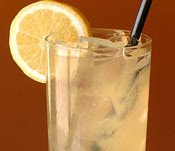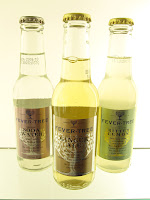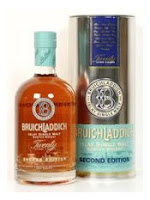 The mixing of whisky with soft drinks has been popular since the Victorian times. This coincides with the rise of popularity of whisky, especially blended whiskies, and the need to find a lighter and more refreshing way to drink them as the British Commonwealth spread to hotter parts of the globe. This tradition has carried on and there is currently a huge upsurge of interest in whisky cocktails and the market is becoming flooded with pre-mixed whisky based drinks, such as the newly announced Famous Grouse & Cola.
The mixing of whisky with soft drinks has been popular since the Victorian times. This coincides with the rise of popularity of whisky, especially blended whiskies, and the need to find a lighter and more refreshing way to drink them as the British Commonwealth spread to hotter parts of the globe. This tradition has carried on and there is currently a huge upsurge of interest in whisky cocktails and the market is becoming flooded with pre-mixed whisky based drinks, such as the newly announced Famous Grouse & Cola.We plan to sample and review some of these pre-mixed drinks in the near future but we thought that it was time to review some of the more common soft drinks that are regularly mixed with whisky to produce a long drink.
To do this, we have teamed up with Chris Maclean who writes Drink Station - arguably the UK's leading soft drinks blog. Chris is also a big whisky fan and we decided to choose mixers from one company's range of drinks - the innovative Fevertree Limited - so as to create consistency. Most people have tried a whisky and cola at some point so we also decided to ignore cola for now, instead concentrating on alternatives. After sampling the soft drinks together, Chris has written the tasting notes for each and we then discussed which whiskies we thought would go well with each one, listing some suggestions for you to enjoy and try. Click the links if you want to read our full tasting notes of the suggested whiskies. Happy mixing!
No artificial ingredients
Fevertree Limited is a company founded in 2000 and they sought to create an Indian tonic mixer from all-natural ingredients, including quinine (the bark extract of the Cinchona tree, colloquially known as the 'Fever Tree'). Fevertree launched the tonic water in 2005, and have since managed to redefine the mixer category by totally banning the use of artificial ingredients (they only use natural sweeteners and flavourings, and avoiding preservatives), taking instead a qualitative approach to drink formulation and packaging. They have since grown their product range and here we try a few of them, starting with the original tonic water.
 Fever-Tree Premium Indian Tonic Water
Fever-Tree Premium Indian Tonic WaterDS > Fever-Tree tonic water is a bright, clear liquid. It exhibits a lively carbonation, with small bubbles rising steadily when the drink settles in the glass. An attractive, fresh, delicate aroma of lemon icing on the nose, with that familiar dusting of icing sugar. On the palate, fresh lemon citrus, with some supple acids producing a gentle tang. There is excellent balance here between the elements, as a stimulating lemony bitterness develops and persists on the finish. A quality mixer that speaks for itself, with a unique texture and flavour profile, that avoids the cloying, salty nature associated with artificial sweetener and preservative use.
WFE > Whisky and tonic may seem a little retro these days but is a very refreshing drink, especially with some ice and a slice on a hot day. We have used a lighter style of whisky when making this, such as Auchentoshan Classic or AnCnoc 12 years old single malts. This drink really lends itself to blended whiskies though, with something like Bell's or Famous Grouse being perfect.
Fever-Tree Lemonade
DS > Fever-Tree lemonade is a bright, colourless liquid. After the initial rush of carbonation, much smaller bubbles can be observed rising slowly through the liquid in the glass.. A fragrant, biscuity nose with sweet lemon. This is juicy, mouthwatering and with plenty of sun-warmed fruit. This is a lemonade that is soft and round in the mouth, with warm, biscuity citrus flavours. Supple acids again producing a gentle tang on the short finish.
WFE > Whisky and lemonade is a classic drink. You can really mix most whiskies with lemonade, with the exception of the smoky, peaty style which clashes quite unpleasantly. Any whisky with decent sweetness (but not full-on sweetness) and possibly some fruitiness is good - think of Balvenie Doublewood or Dalwhinnie 15 years old for single malts or something like Jameson's or Grant's Family Reserve for a blended whisky. Bourbons are also very good with lemonade.
Fever-Tree Ginger Beer
DS > Fever-Tree ginger beer is a cloudy, pale yellow colour that takes on a green hue when examined in the light. There is a fine sediment of ginger particles in suspension. Instantly aromatic on the nose, with fresh ginger in abundance. There is an extraordinary scent here, earthy and distinctly spicy- cumin? It's intoxicating stuff. Be sure you're sitting down for this one! An intense rush on the palate, with a controlled explosion of deep, freshly grated ginger flavour, topped with lemon and black pepper seasoning. This is as peppery and fiery as you could want, with that entrancing and utterly unique spicy, earthy cumin note intact. Predictably long finish as the chilli and fire trail off, this remains clean and refreshing throughout. A heady, entrancing experience; a one of a kind ginger beer that sets a stylish example.
WFE > Whisky and ginger beer is a slightly more niche drink than the more popular whisky and dry ginger ale (see below). Ginger beer tends to be spicier than dry ginger ale, so you need a whisky that is strong enough in flavour to combat and compliment this. We recommend something with a high level of sweetness, such as Macallan 10 years old or Glenfarclas 10 years old in the single malt category or something from the Whyte & Mackay range for the blends.
 Fever-Tree Ginger Ale
Fever-Tree Ginger AleDS > This is a mid lemon yellow colour. The liquid is clear and bright, and a lively carbonation soon settles down in the glass to reveal the small bubbles now rising steadily. Warm aromas of honey, lemon and discreet, freshly grated ginger. There is a lovely purity and depth on show here. Light yet satisfying flavours, as some subtle gingers tickle the palate with a trace of pepper spice. This is fresh, biscuity and clean. The ginger here never escapes the leash, always held in check by some more determined caramel notes. Within the light structure one finds an excellent balance, and a clean finish that are the hallmarks of these mixers.
WFE > The mixing of whisky and ginger ale is a throwback to the 1970s, but is a combination that can work brilliantly. The 'Canadian & Dry' is the classic, which uses Canadian Club whisky with Canada Dry ginger ale and is worth trying in a bar or if you can get the ingredients. If not, then try using any ginger ale combined with a whisky with plenty of vanilla and cereal notes, such as single malts like Glenmorangie Original or Glenlivet 12 years old. The Monkey Shoulder vatted whisky works superbly for this also.
Fever-Tree Soda Water
DS > Fever-Tree Soda Water is a bright, clear liquid. It is highly carbonated, with noticeably small bubbles rising steadily from various points in the glass when the drink settles. There is a very light, powdery scent to this, like a well diluted Alka-Seltzer or the spray of a vintage soda syphon. Lively mouthfeel, with the bicarbonate of soda pinging around the palate. Biscuity, with a creamy bite, like water biscuits covered in a thin layer of salted butter. A light bitterness precedes the short finish. A cleansing and refreshing mixer.
WFE > Whisky and soda is another old school classic combination. You can really use any style of whisky. The only exception is something smoky and peaty, where the soda water doesn't do it any favours. Again, like for the lemonade, something with a decent level of sweetness or fruitiness helps to create a more balanced drink.
Fever-Tree Bitter Lemon
DS > A pale yellow colour, slightly cloudy and with a wide watery rim developing towards the edge of the glass. The lively carbonation soon settles, and the trademark small bubbles settle in and tick over steadily. Concentrated lemon juice on the nose. Warm, appetising and juicy. There are powdery notes too, recalling lemon sherbet. This is aquatic, breezy and altogether nostalgic. A 'lemon grove' experience on the palate: Whole lemons, with pith, rind, oils, pips... Zesty and tangy, with good balance between the elements. Fresh and intense now with great clarity of flavour, leading to a bitter finale as the quinine comes through and adds length on the finish.
WFE > This may sound like a strange combination but with the right style of whisky, it is absolutely delicious. The whisky has to be light, fresh and used as an aperitif, otherwise it will overpower the bitter lemon and the final drink quickly becomes undrinkable. Single malts like Benriach 'Heart of Speyside' or Glen Grant Unaged are perfect, as would a light blend such as Bailie Nicol Jarvie.
All Fever-Tree drinks should cost approximately 75p for a 200ml bottle and are widely available from supermarkets and other specialist food stores in the UK and Europe.
* Please note - the image at the top of the post is taken from www.cocktailtimes.com. The centre and bottom images of the Fevertree drinks are copyright of www.drinkstation.blogspot.com.













